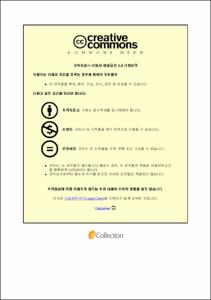포스트코로나시대에 따른 언택트러닝 교수설계자의 잡크래프팅 역량모델 개발
- Abstract
- This study tried to model the competency of professors in charge of instructional design on the educational field in the rapidly changing post-corona era. The competency of the instructional designer was conceptualized in terms of 'job crafting', which means creating doing-job- abilities by oneself. And, in this study, the form of education in the post-corona era, includes face-to-face education, non-face-to-face education, and both real-time and non-real-time education, was named untact learning and research was conducted.
The purpose of this study was to develop competency model of job-crafting for an untact learning instructional designer and to verify its validity. In addition, based on the developed capabilities and behavioral indicators, a competency demand survey was conducted and the needs of the capabilities development were investigated.
In order to carry out the purpose of this study, behavioral event interview (BEI) and focus group interview(FGI) were conducted as well as literature study, and a draft competency model was developed based on the collected data. Based on the draft of the competency model, Delphi survey by expert panels of 12 people was conducted in the first and second rounds. By collecting the opinions of education experts, including experts in that field, a competency model consists of groups of competency , lists of capabilities, and behavioral elements was completed. The final untact learning instructional designer's job crafting competency model consists of 4 competency groups, 12 competencies, and 31 behavioral indicators.
The competency group was classified into the instructional design expertise competency group, the building environment competency group, the challenging value competency group, and the burnout management competency group. The instructional design expertise competency group consists of 'initiative self-development', 'digital transformation instructional design', and 'ICT learning promotion' competency to develop oneself in relation to the task to increase the performance and value of work for the instructional designer. The building environment competency group is the competency to prepare and improve the learning environment for learners and the design environment for instructors so that teaching and learning activities can be carried out smoothly in any situation. It is divided into the 'learning environment setup' competency and the 'teaching environment setup' competency. The challenging value competency group consists of 'reflection', 'problem response', 'collaboration' and 'innovation' competencies that reinterpret the value and meaning of work and have an active attitude rather than being complacent with a given job. The burnout management competency group is the management competency that the instructional designer controls and self-controls to get out of a situation where he/she is physically, mentally, and emotionally exhausted from the burden of the environment and work. It consists of 'relationship control', 'response to job change', and 'risk control' competencies.
Each of the 12 competencies was described by two or more and four behavioral indicators. Based on the behavioral indicators developed in this way, demand survey on competency developing was conducted. Instructional designers from various fields participated in the questionnaire randomly distributed through SNS. In the form of a Google survey, a questionnaire was limited to 100 people, and demand analysis was conducted based on the data.
In all 12 competencies, the difference between the importance level and the current level of each competency perceived by the participants was significant. 'ICT learning promotion' was recognized as the most important competency, and 'innovation' was found to be the most important competency currently possessed. In the discrepancy level, which is the difference between the important level and the current level, the 'collaboration' capability was found to be the highest.
The competency with the highest Borich requirement value was the 'collaboration' competency, and the lowest competency was the 'response to job change' competency.
As a result of a schematic analysis of the LF model, 'Initiative Self-development', 'Digital Transformation Teaching Design', 'ICT Learning Promotion', 'Learning Environment setup', 'Reflection' and 'Collaboration' competencies were located in the HH quadrant, the priority development competency area.
Comparing the t-test with the discrepancy level, Borich needs analysis, and LF analysis, the first priority development competency is 'Initiative Self-Development', 'Digital Transformation Teaching Design', 'ICT Learning Promotion', all competencies were applicable. And the 'collaboration' competencies of the challenge value competencies group were derived.
- Issued Date
- 2021
- Awarded Date
- 2021. 8
- Type
- Dissertation
- Publisher
- 부경대학교
- Affiliation
- 부경대학교 대학원
- Department
- 대학원 교육컨설팅협동과정
- Advisor
- 허균
- Table Of Contents
- Ⅰ. 서론 1
1. 연구의 필요성 및 목적 1
2. 연구 문제 10
3. 용어의 정의 10
4. 연구의 제한점 12
Ⅱ. 이론적 배경 14
1. 언택트러닝의 교수설계역량 14
2. 잡크래프팅 40
3. 역량모델 개발 63
Ⅲ. 연구방법 86
1. 연구설계 86
2. 문헌연구 90
3. BEI 및 FGI 93
4. 델파이조사 103
5. 역량 요구도 분석 109
6. 신뢰도 및 타당도 확보 방안 115
Ⅳ. 연구결과 117
1. 역량모델 초안 117
2. 모델 타당도 검증 159
3. 역량 요구도 분석 182
Ⅴ. 논의 및 결론 189
1. 논의 189
2. 결론 및 제언 199
참고문헌 208
부록 241
- Degree
- Doctor
- Files in This Item:
-
-
Download
 포스트코로나시대에 따른 언택트러닝 교수설계자의 잡크래프팅 역량모델 개발.pdf
기타 데이터 / 1.83 MB / Adobe PDF
포스트코로나시대에 따른 언택트러닝 교수설계자의 잡크래프팅 역량모델 개발.pdf
기타 데이터 / 1.83 MB / Adobe PDF
-
Items in Repository are protected by copyright, with all rights reserved, unless otherwise indicated.